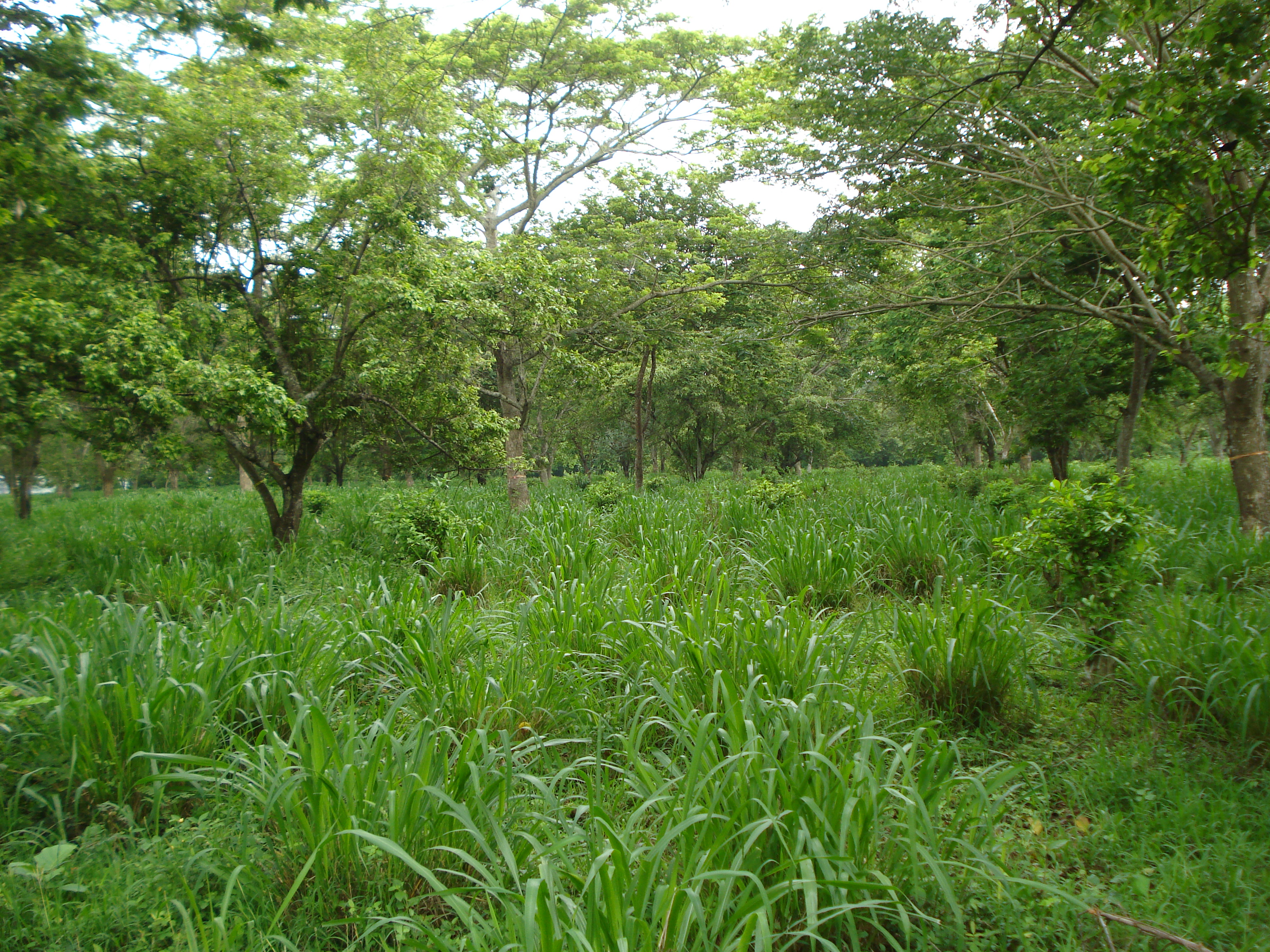Heat stress and blood-sucking diptera count in multi-level silvopastoral systems
DOI:
https://doi.org/10.15517/am.v30i3.36296Keywords:
agroforestry, ectoparasites, respiration rate, climatic factors, zebu, meat animalsAbstract
Introduction. Silvopastoral systems are livestock scheme production schemes with the potential to mitigate the negative effect of the environment on animal productivity. Objective. The objective of this work was to evaluate the effects of multi-stratum silvopastoral systems on heat stress and the population of hematophagous dipterans in beef cattle. Materials and methods. Between May and October 2014, in the Turipaná research center in Córdoba, Colombia, the behavior of Cebu Brahman and Romosinuano animals was analyzed in two silvopastoral arrangements (aSSP) with diversity in their composition and plant stratification (p-Arbust with two strata and p-Arbust-Arbor with three strata) and in a treeless prairie, with a random complete block design. In each treatment, the environmental temperature (TA) and relative humidity (RH) were evaluated, and a temperature-humidity index (ITH) was constructed. In animals the skin temperature (TP) and respiratory rate (FR) were evaluated at two hours of the day (6:00 and 13:00), and hematophagous diptera (CDH) were counted between 8:00 and 10:00 a.m. The data were submitted to a variance analysis for mixed models in the variables TA, HR, TP and ITH and generalized mixed models for CDH and FR. Results. The environmental variables were influenced by multiple factors including: the change in sampling schedules, and the silvopastoral arrangement. The highest environmental load (ITH) was observed during the afternoon, an evaluation that significantly influenced the response in FR with increases that reached 2.1 times more in the Pasto treatment, against 0.8 in p-Arbust-Arbor. Conclusions. The aSSP evaluated presented comparative advantages against the reduction of heat stress and the count of hematophage flies under conditions of the middle valley of the Sinu River. The aSSP p-Arbust managed to keep fly counts lower over time.
Downloads

Downloads
Additional Files
Published
How to Cite
Issue
Section
License
1. Proposed policy for open access journals
Authors who publish in this journal accept the following conditions:
a. Authors retain the copyright and assign to the journal the right to the first publication, with the work registered under the attribution, non-commercial and no-derivative license from Creative Commons, which allows third parties to use what has been published as long as they mention the authorship of the work and upon first publication in this journal, the work may not be used for commercial purposes and the publications may not be used to remix, transform or create another work.
b. Authors may enter into additional independent contractual arrangements for the non-exclusive distribution of the version of the article published in this journal (e.g., including it in an institutional repository or publishing it in a book) provided that they clearly indicate that the work was first published in this journal.
c. Authors are permitted and encouraged to publish their work on the Internet (e.g. on institutional or personal pages) before and during the review and publication process, as it may lead to productive exchanges and faster and wider dissemination of published work (see The Effect of Open Access).























